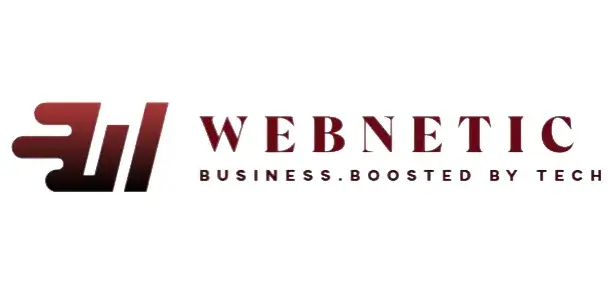Ecommerce Website Development Trends that will influence shopping in 2025
Not all trends in ecommerce website development stand the test of time — but 2025 is seeing a wave of innovations that are reshaping how businesses sell online. From AI-powered automation to immersive social shopping, the future of ecommerce is smarter, faster, and more customer-focused than ever before.
Highlights
ToggleWhether you’re running a local store in Ghaziabad or building a pan-India ecommerce brand, these top ecommerce development trends will help you stay ahead of the curve.
If you’re looking to implement these innovations seamlessly, check out our website development service tailored for growing ecommerce businesses.

1. AI Is Becoming the Engine Behind Ecommerce
Artificial Intelligence has grown far beyond chatbots and basic product recommendations. In 2025, ecommerce businesses are turning to generative AI and large language models (LLMs) to streamline everything — from content creation to personalised shopping experiences.
- Have hundreds of products to manage? AI can generate SEO-optimized product descriptions in seconds.
- Need custom landing pages for promotions? AI-based page builders now create layouts using simple text prompts.
- Want better search rankings? AI tools automatically write meta tags and improve content structure.
For ecommerce, AI is no longer just helpful — it’s becoming essential.
2. Smart Data Integration Is the New Superpower
Every click, view, and transaction creates valuable data. But without the right system in place, most of that data goes unused.
That’s why 2025 is the year of data harmonisation — connecting your CRM, inventory, sales, and marketing tools to create a single, unified view of your business.
- Get real-time customer insights across channels.
- Automate campaigns based on buying behaviour.
- Feed clean, structured data to AI tools for sharper personalization.
If you want to compete using next-gen ecommerce tools, organised data is your launchpad.
3. Conversational Commerce Is Finally Smart (and Friendly)
Gone are the days of clunky, robotic chatbot replies. Thanks to modern AI, ecommerce chatbots in 2025 are more conversational, accurate, and human-like.
- Shoppers can ask product questions in natural language.
- Chatbots can now recommend products based on past orders and browsing patterns.
- Customers enjoy faster, self-service support without feeling like they’re talking to a robot.
As messaging becomes the preferred way to shop, a smart, friendly chatbot can be your best salesperson.
4. Headless Commerce Gives You More Control
In a fast-changing market, businesses need agility — and that’s where headless ecommerce shines.
By separating the frontend design from the backend systems, brands can:
- Make website updates instantly without relying on developers.
- Launch new campaigns and layouts faster.
- Deliver consistent experiences across web, mobile, and even kiosks.
Think of it as giving your ecommerce platform a turbo engine with precision control.
5. Resale Is Reinventing Retail
Sustainability is more than a buzzword — it’s a movement. In 2025, shoppers are embracing resale like never before. From fashion to electronics, secondhand products are cool, economical, and eco-friendly.
- Over 50% of consumers are actively buying used goods.
- Brands are launching their own resale platforms with reverse logistics built-in.
This isn’t just a trend — it’s a profitable shift. If you’re not exploring resale, you’re leaving money (and loyalty) on the table.
6. Social Commerce Is the New Storefront
Today’s customers don’t just scroll — they shop while scrolling. Social platforms like Instagram, Facebook, and TikTok are becoming full-fledged shopping channels.
- Over 67% of online shoppers made at least one purchase via social media in 2025.
- New tools allow seamless store integration, real-time inventory sync, and influencer collaborations.
To thrive, you need more than a business profile — you need to engage, entertain, and sell all at once.
7. Video Content Is the New Conversion Magnet
Static images are no longer enough. Customers want to see products in action, understand how they work, and imagine using them in real life.
In 2025, smart brands are using video not just in ads, but across the entire customer journey:
- Product pages with demo videos.
- Post-purchase emails with tutorials.
- Social stories showcasing unboxing and reviews.
In fact, 9 out of 10 buyers say video plays a key role in their purchase decision. Don’t just tell — show.
8. Loyalty Programs Are Evolving into VIP Clubs
Customers are tired of collecting meaningless points or rewards they’ll never use. This year, loyalty is all about relevance and recognition.
- Give exclusive offers and early access to products.
- Personalise rewards based on past behaviour.
- Create a feeling of community around your brand.
The best programs are simple, personalized, and rewarding — because happy customers come back (and tell their friends).
9. User-Generated Content Builds Authenticity
Today’s buyers trust real users more than polished ads. Photos, reviews, and videos created by your actual customers build trust and boost sales.
- UGC improves conversions by over 100%.
- It adds a layer of social proof to your product pages.
- It keeps your content strategy fresh — without big marketing budgets.
Encourage happy customers to share their experience, and you’ll turn them into your brand ambassadors.
10. Subscriptions Create Stability and Stickiness
From snacks to skincare, subscriptions are booming. Why? Because they offer convenience for shoppers and steady income for sellers.
Smart brands are using subscriptions to:
- Offer exclusive flavours, colours, or early access.
- Collect first-party data for personalised marketing.
- Predict demand and manage inventory better.
In 2025, subscriptions are not just for Netflix — they’re for everything.
Frequently Asked Questions (FAQ)
How do I know if an ecommerce trend is right for my business?
Great question! Not every new trend will make sense for your business, so start by weighing the pros and cons. Think about how it might improve the customer experience, how much time or money it would take to implement, and what kind of results you could expect in the short and long term.
Also, pay attention to what your competitors are doing. If they’ve jumped on a trend and it seems to be working, it could be worth exploring — but don’t copy blindly. Every business is different. Always keep your customers at the heart of your decisions. If a trend helps serve them better, it’s probably worth a closer look.
Is ecommerce still growing in 2025?
Absolutely! Ecommerce is booming and continues to grow across almost every industry — whether it’s fashion, electronics, healthcare, or even B2B services. Shoppers now prefer digital convenience and are looking for smooth, seamless online experiences.
In fact, global ecommerce sales are projected to cross $8 trillion by 2026, showing no signs of slowing down. So yes, if you’re investing in ecommerce website development, you’re heading in the right direction.
I want to use AI in my online store. Where do I start?
AI is a game-changer in ecommerce — helping automate tasks, improve product recommendations, and even boost conversions. But before diving in, there are a few things to consider.
First, build trust with your customers. Let them know how you’re using AI and how their data will be handled. Be transparent. Set clear ethical guidelines around how AI is used — especially when it comes to privacy, accuracy, and bias.
Ask yourself:
- Are we protecting customer data properly?
- Are we monitoring the accuracy of AI outputs?
- Have we chosen trustworthy AI tools and partners?
Starting small with clear intentions and scaling gradually is usually the best way forward.
How do I know if a new ecommerce trend is working for me?
Before you jump into a new trend, decide what success looks like for your business. Set clear goals and trackable metrics — like conversion rate, average order value, repeat purchases, or customer engagement.
Once it’s live, monitor performance regularly. Are you seeing improved customer satisfaction? Better sales numbers? More traffic or sign-ups? These are signs that you’re on the right track.
Choosing the right KPIs helps you stay agile and adapt your strategy quickly. With the right tracking in place, you can turn trends into growth opportunities.
Final Thoughts
The ecommerce world in 2025 is fast, flexible, and fiercely customer-focused. If you’re planning to build or upgrade your online store, these ecommerce website development trends offer real direction. From AI-driven automation to social-first shopping, it’s all about creating smarter, more personal experiences that keep shoppers coming back.
For expert guidance and end-to-end execution, trust Webnetic’s exceptional ecommerce website development services to turn your vision into a high-performing digital store.







